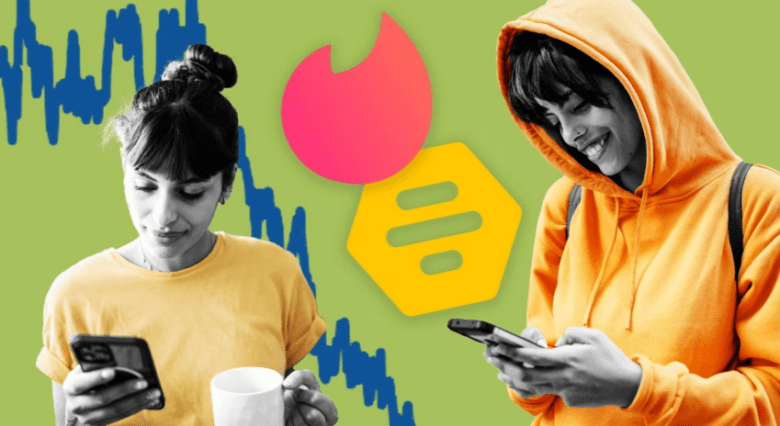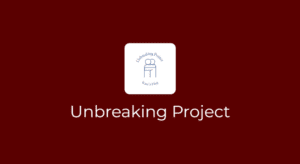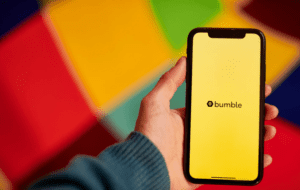Online Dating Must Reinvent the Dating App: Matchmaker Happn Says AI and IRL Solutions Can End App Burnout
The online dating industry was once celebrated for revolutionizing how people find love. Platforms like Tinder, Bumble, and Hinge became cultural icons, connecting millions of daters across the globe. But in 2024, the romance seems to be fading. Growth has plateaued, user numbers have dipped, and emotional burnout is at an all-time high.
Many apps are trying to win users back with new features, but swipes and chat prompts alone can’t fix a systemic problem. To thrive, dating-app companies must reinvent the experience — prioritizing authenticity, mental health, and meaningful interaction over algorithms and addictive design.
The challenge is monumental, but the reward is clear: restoring faith in the digital quest for a real partner.
1. The Digital Love Dilemma — Why Every Dating App Feels the Same
Over the past decade, dating apps have multiplied faster than any other digital platform. There are now more than 8,000 dating-related apps globally, serving everyone from heterosexual professionals to niche communities and young people in college. Yet the problem isn’t scarcity — it’s sameness.
Most apps follow the same loop: swipe, match, chat, repeat. This endless cycle has led to psychological exhaustion among users. People are tired of gamified love. Instead of fostering emotional depth, algorithms now encourage impulsive decision-making based on profile photos and short bios.
A matchmaker from Happn — the app known for location-based matching — recently remarked, “If every app feels identical, users will lose faith in finding genuine connections.” That prediction is already unfolding.
The data tells the story: since 2023, downloads for major dating apps have declined by more than 12%, and Tinder’s engagement rate — measured by monthly active users — has dropped nearly 18%. Tinder lost its once-dominant appeal among millennials and Gen Z users who now crave less superficial interaction.
To reinvent itself, the industry must shift focus from fast swipe mechanics to slow, intentional discovery — from games to growth.
2. From Swipe Fatigue to Soul Searching — Addressing Dating App Burnout
The rise of dating app burnout marks the biggest crisis in modern romance. After years of constant swiping, users are emotionally drained. What was once exciting now feels transactional.
The Psychology of Digital Dating Burnout
Experts describe this as “romantic fatigue” — a form of emotional depletion triggered by repetitive rejection and endless chat loops that go nowhere. Psychological studies show that this cycle activates stress responses similar to work-related exhaustion. Single people feel more loneliness, less optimism, and greater pressure to perform online.
The technology itself plays a role. Apps track every swipe, message, and response, fine-tuning their algorithms to maximize engagement rather than satisfaction. This measurement approach prioritizes “time spent” over “matches made.”
To solve this, forward-thinking apps are experimenting with new models. Some limit daily swipes, while others — like Bumble — encourage “slow dating” with reflective questions that go beyond surface-level attraction. Coaches now advise daters to take “digital detoxes,” deleting apps for weeks to reset their emotional energy.
The cure for burnout isn’t more automation; it’s humane design. The dating-app industry must learn that love can’t be optimized by an algorithm — it must be nurtured by empathy.
3. IRL Is Back — Why In-Person Dating Events Are Surging
The backlash to digital fatigue has inspired a new trend: in-person connection. IRL dating events — from social mixers to clubs for young people — are booming.
These events for young professionals blend tech with touch. Many new platforms now integrate offline meetups directly into their app experience. Users can RSVP to a local launch party, join a club, or meet potential matches during curated social experiences.
Unlike traditional swiping culture, these hybrid models prioritize safety and consent. Participants know who they’ll meet, and every interaction is structured around real conversation rather than endless texting.
Some startups are even reviving the “matchmaking” model. A new app called Thursday organizes weekly in-person events in major cities, promoting spontaneous but safe encounters. Another company, The Inner Circle, hosts exclusive dating events in curated venues, turning the act of finding a partner into something social, not digital.
The data supports this shift: participation in hybrid dating experiences has increased 47% since 2023, especially among millennials and Gen Z professionals. The message is clear — the future of online dating is offline.
4. Artificial Intelligence Meets Authenticity — The Rise of AI Matchmaking
If the first wave of dating apps was about accessibility, the next will be about accuracy — and AI is leading that transformation.
Modern AI systems now analyze communication tone, response time, and shared values to predict compatibility. Instead of matching people on mutual interests alone, future technology will measure emotional depth, empathy, and conflict style.
However, innovation comes with responsibility. Apps are trying to balance personalization with privacy. Under new regulations, companies must clarify how cookies and data networks track users — and display transparent cookie policy and privacy policy agreements. Trust is no longer optional; it’s mandatory.
Startups are also using AI to detect harmful behavior and inappropriate content, strengthening community guidelines. This is critical for restoring confidence in digital spaces where consent and safety are often compromised.
The next generation of matchmaking will be powered by AI, but grounded in human empathy — technology that learns to love like a coach, not manipulate like a marketer.
5. Rebuilding Trust in the Digital Dating Space
After years of scams and fake profiles, users are demanding authenticity. Over half of dating app users say they’ve encountered deceptive information, leading to skepticism and disengagement.
To solve this trust crisis, major platforms like Match Group and Bumble are implementing AI-based verification tools and digital ID scanning. These innovations help confirm that profiles are real and that daters are who they claim to be.
But rebuilding trust extends beyond technology. It requires cultural change. Companies must clearly state how data is collected, stored, and shared. Transparent cookie policy updates and visible privacy assurances should be the norm, not the exception.
Hinge’s leadership recently announced an initiative to promote “authentic love” by showing users who have read their messages and encouraging open conversation about intentions. These small gestures can make a big difference in how people feel valued within an app.
Without accountability and ethics, no amount of new features will bring online dating back from its burnout phase.
6. The Future Partner Search — Meaning Over Metrics
In the next phase of digital romance, the focus will shift from matching to meaning. Gen Z and millennials no longer measure success by the number of matches, but by quality conversation and emotional connection.
New apps are integrating mindful interaction tools: gratitude journals, post-date reflections, and emotional check-ins. Instead of chasing viral trends, they’re helping users become better partners.
How AI and Design Can Reinvent the Partner Experience
Designers are now rethinking the setting of modern apps. Imagine logging into an app that opens with a reflection question instead of a feed. You’re asked, “What kind of partner do you want to be today?” That shift from consumption to consciousness could redefine how we find love online.
Forward-thinking brands are investing in mental health partnerships and coaching programs. A relationship coach might pop up with insights about communication styles or emotional triggers. In this way, AI becomes a personal growth ally, not a manipulative matchmaker.
This is how the dating-app industry must evolve: from endless swipes to intentional design that builds better humans, not just better profiles.
7. Reinvention or Extinction — The Urgent Call to Evolve
Legacy giants like Tinder, Bumble, and Match Group still dominate market share, but their reign is fragile. As young people move to niche apps such as Grindr or faith-based clubs, mainstream platforms must decide — adapt or fade away.
Tinder’s own metrics show that despite millions of downloads, monthly usage among heterosexual users has fallen by double digits. Engagement spikes only when new features go viral, then drops again within weeks. Users crave substance, not spectacle.
To stay relevant, every dating app must embrace transparency, emotional intelligence, and social purpose. The next launch in this industry should not be another clone but a platform that genuinely helps people grow as couples.
If apps are trying to survive, they must stop treating relationships as transactions and start viewing them as transformations.
Final Thoughts — Love Needs a Human Update
Online dating is at a crossroads. For years, it promised to connect us, but instead, it often left us lonelier. The solution isn’t deleting every app, nor is it creating more of them. The answer lies in balance — between digital convenience and human authenticity.
Whether you’re looking for love or designing the next viral app, remember that technology should serve emotion, not replace it. The industry’s future depends on whether it can reinvent itself around empathy, trust, and connection.
Love has always been the most human experience. Now, the task is to make sure our apps remember that too.



